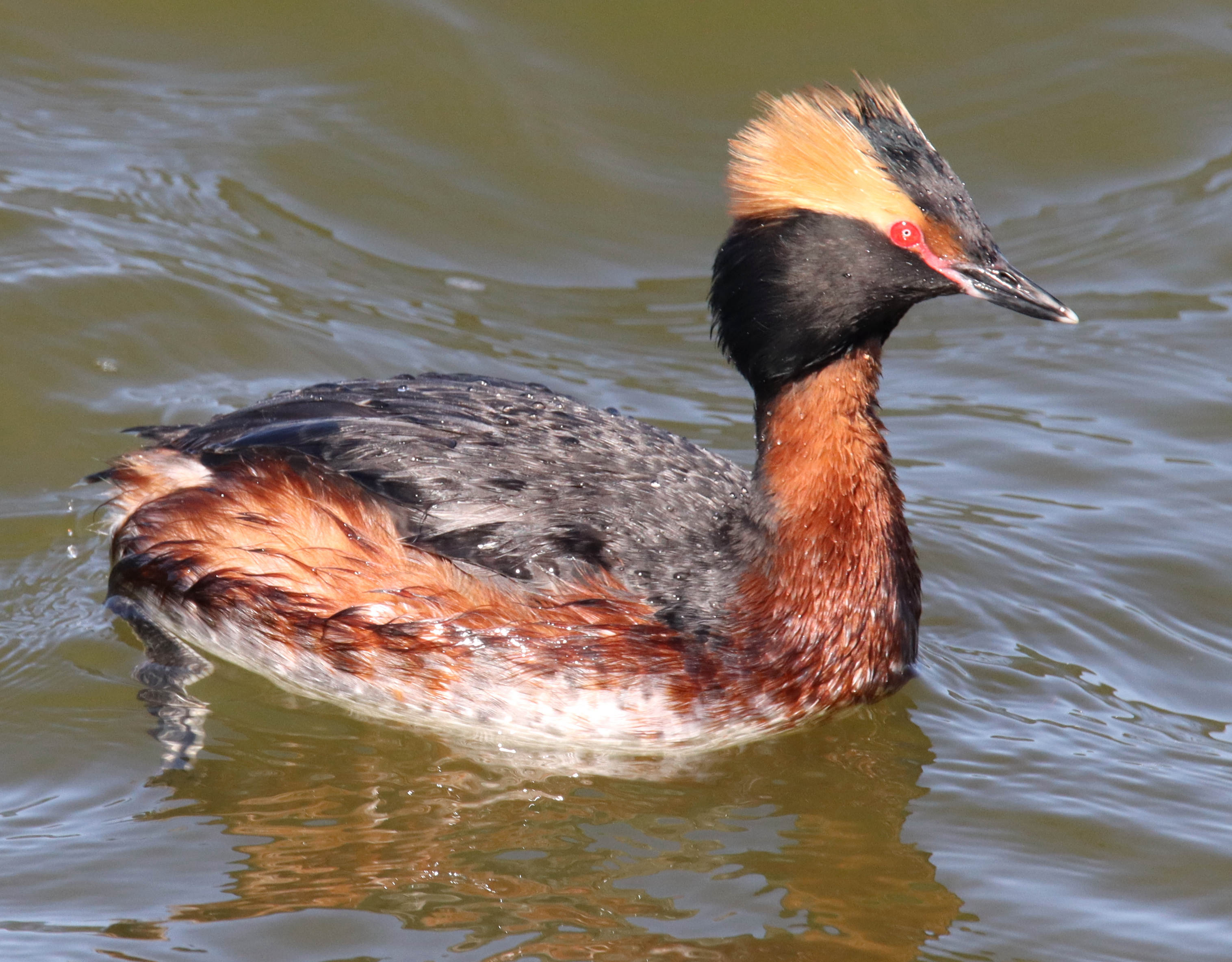
The first Hooded Grebe of spring turned out to be one of the “species ambassadors” that permitted an extended photo session Sunday when it surfaced between dives for food, which turned out to be very small fish and large insect larvae.
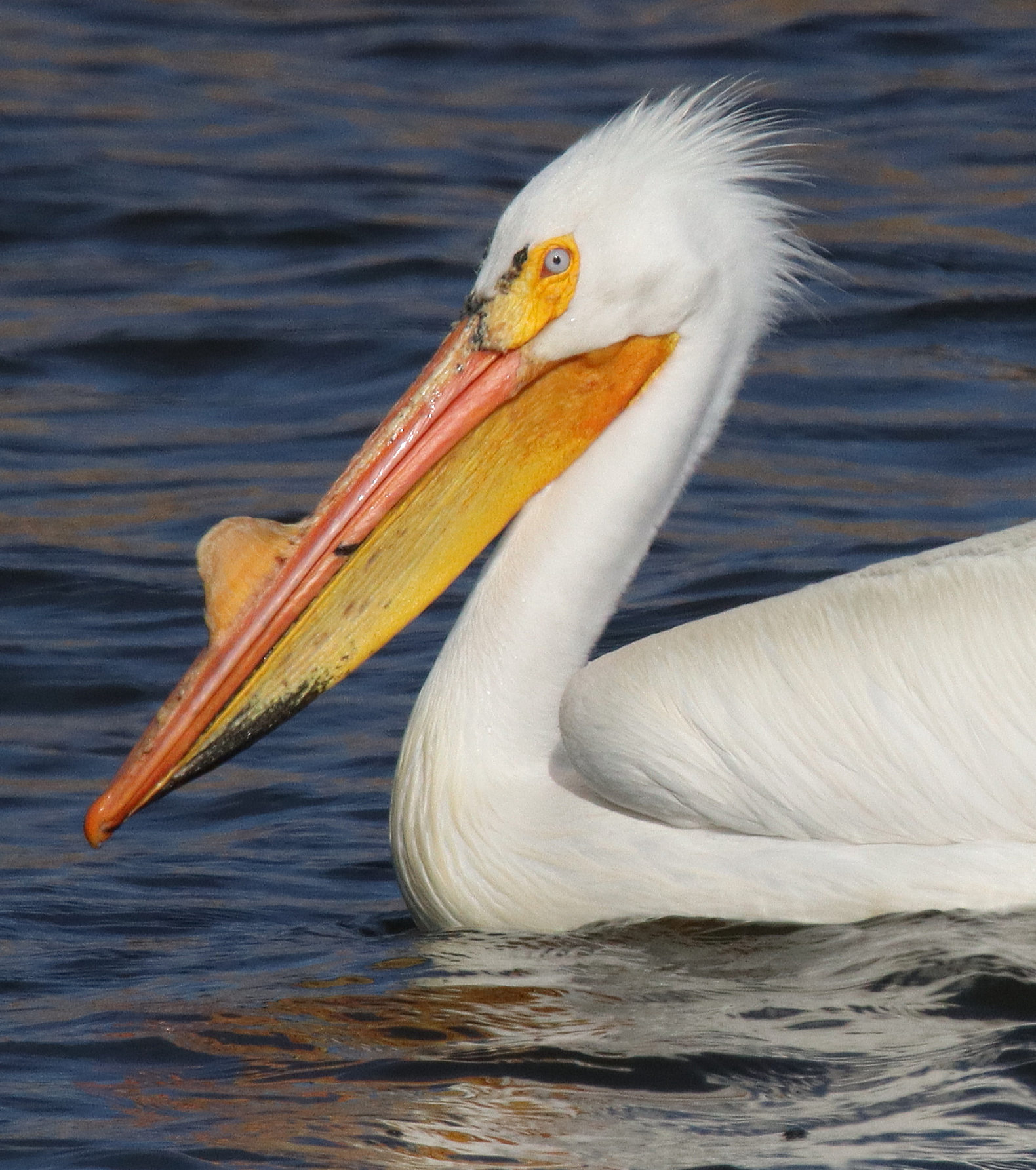
An extended top crest of feathers and enhanced colors of the face and beak, including a seasonal breeding “plate” on the top of its huge beak, adds character to this close portrait of one of many White Pelicans now in the region.
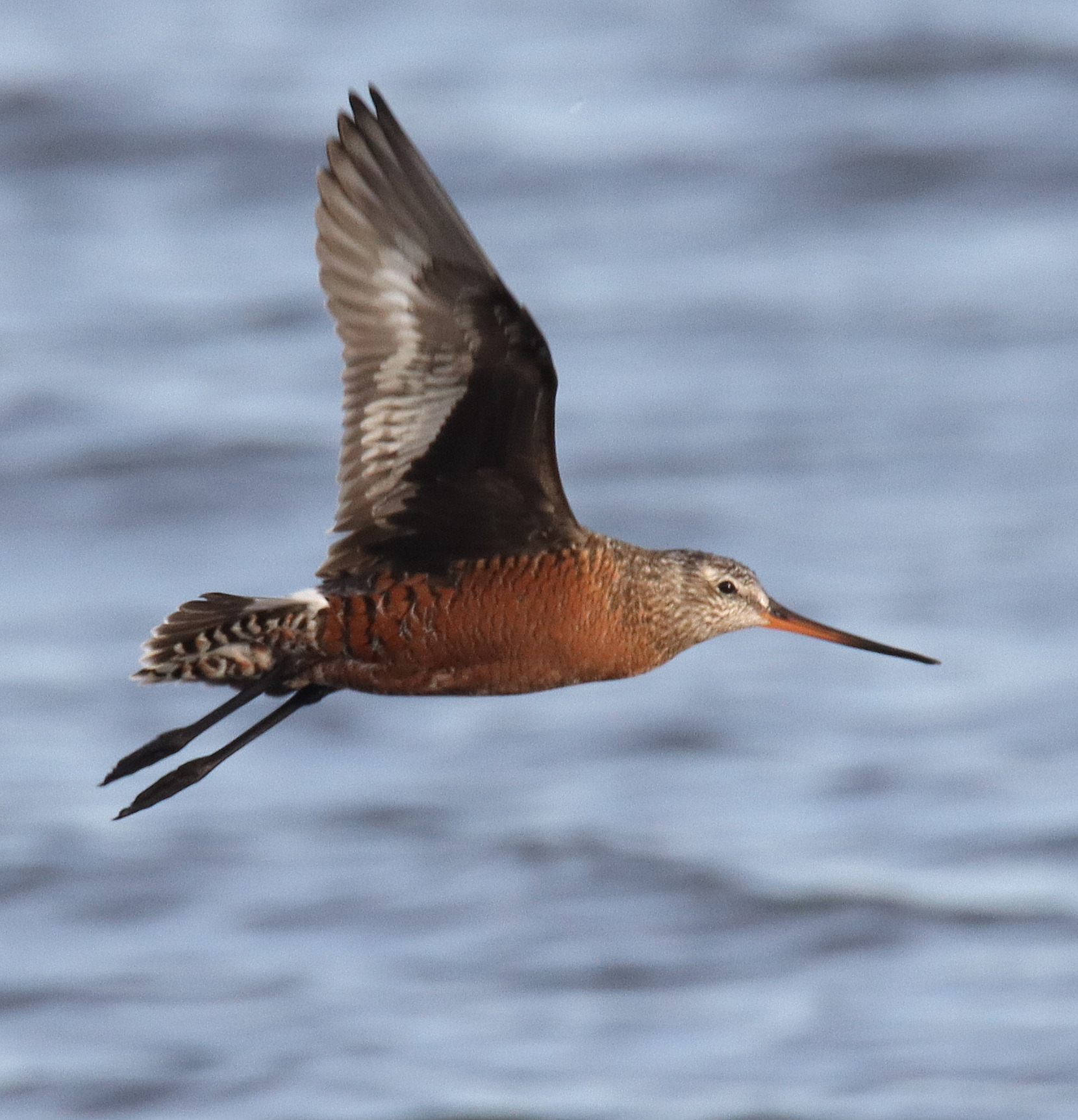
A male Hudsonian Godwit provided a flight photo in fading light as some individuals in a flock of 25 repositioned about 20 feet south along the shoreline.
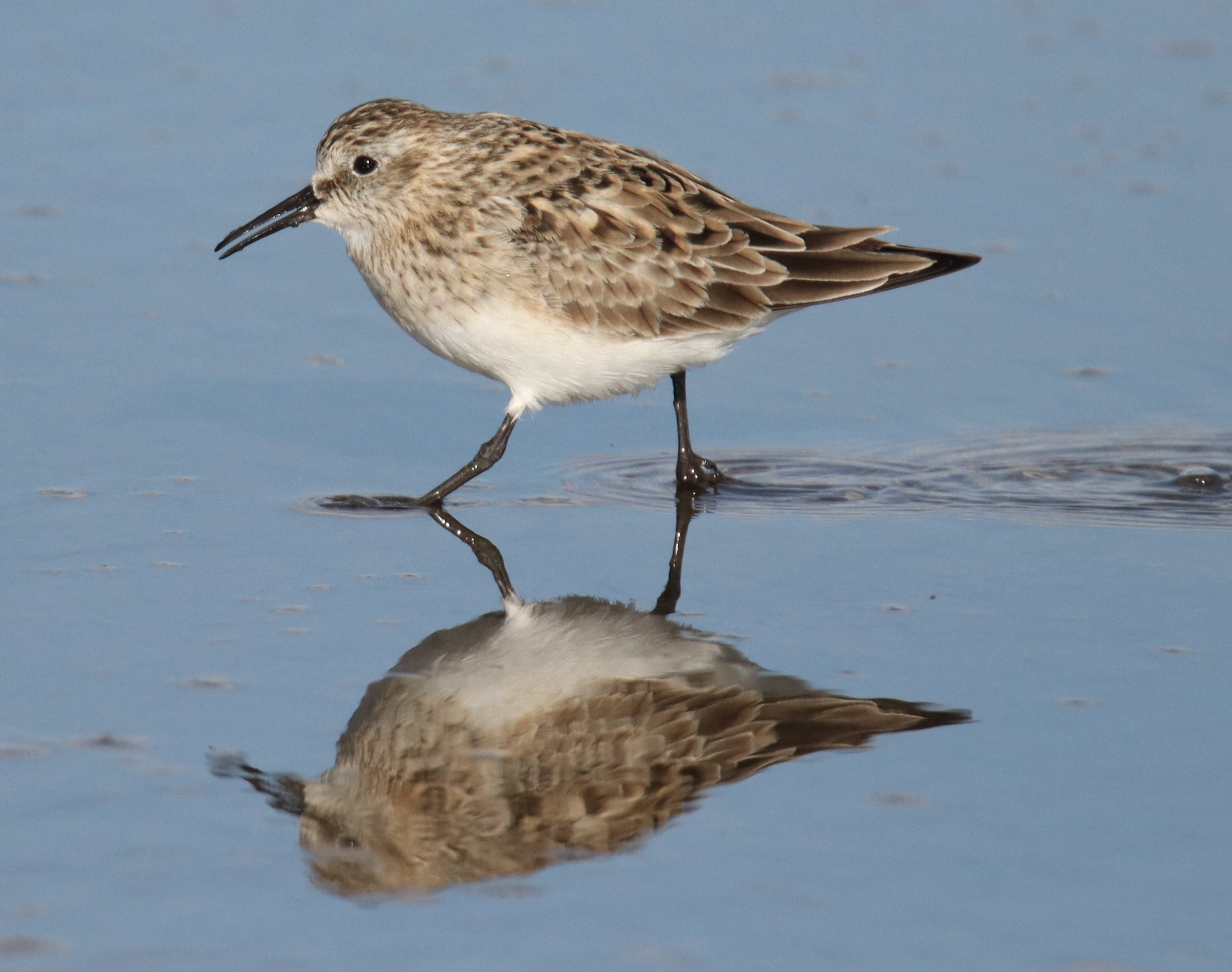
Baird’s Sandpipers have been the most common of the small sandpipers to arrive along Dakota shorelines, with this foraging bird showing a degree of “fluffed” plumage to keep warmer.
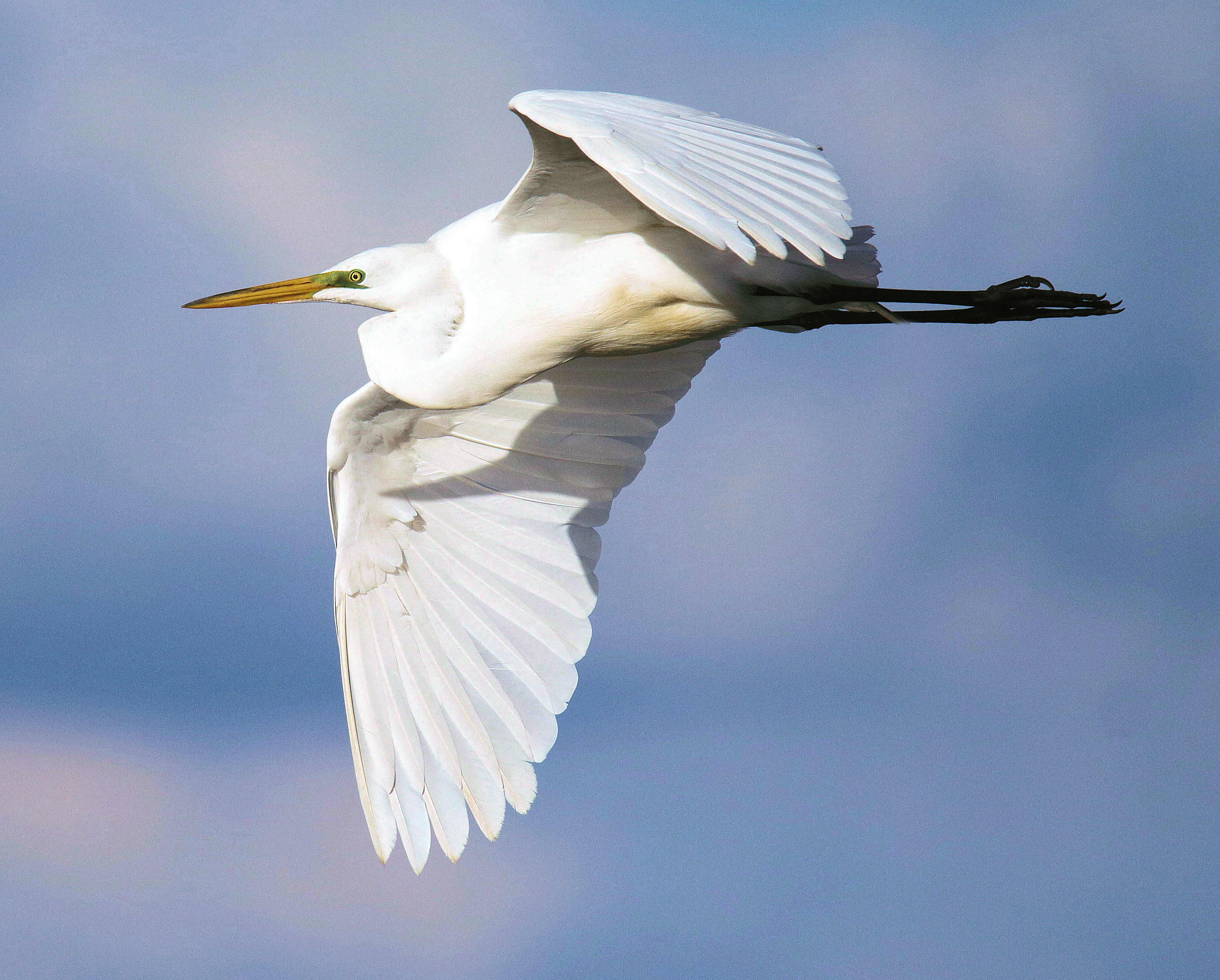
The first Great Egrets of spring were quickly joined by Snowy Egrets and White-faced Ibis to bolster wading bird variety.
|
New birds continue to filter into the area, with 4 Marbled Godwits and a Stilt Sandpiper sighted on Friday, an active little Semipalmated Plover and 2 Great Egrets on Saturday; and 5 Willets, 4 Hooded Grebes, 2 White-faced Ibis, 2 Common Terns, and a soaring Swainson’s Hawk on Sunday. I expect Swainson’s Hawks to appear this far north about April 20th, and while recent first sightings have been up to 4 days earlier, this year’s first was April 21st – always an exciting and welcome addition to the region’s avifauna.
A second Hudsonian Godwit sighting surprised me Saturday morning in the form of a very trusting female that provided close observations and photo sessions as she fed frantically over the weekend in the company of other shorebirds and ducks. Charo Marsh provided the setting for the lady Hudsonian and a pair of Marbled Godwits that combined to provide the theme for this issue’s Bird Photography feature. Then late Sunday I found a flock of 25 Hudsonian Godwits in the same location where I found the first flock of 16 exactly a week before.
Other weekend photo participants included the first Hooded Grebe of the season that provided some nice morning photos as it surfaced during foraging dives. Franklin’s Gulls, White Pelicans, and Double-crested Cormorants made more of a presence over the weekend, and another notable Sunday sighting was a Cooper’s Hawk on the move north.
Ducks continue to be the dominant birds, as they probably will be until the Arctic-nesting geese return in late October. There are 15 species present now (I didn’t see Wood Ducks or Common Goldeneyes this week), including large flocks of Northern Shovelers, Gadwalls, Green-winged Teal, Lesser Scaup, Ring-necked Ducks, and Redheads. Maybe it’s just me, but it seems there are more Ring-necked Ducks in the area this spring, which has been nice. Ruddy Ducks had dwindled down to a widely scattered few, but Sunday morning I found a flock of nearly a hundred that appeared to be newly arrived, but probably just for a stopover.
Mallards appear to be a week into incubation as many drake Mallards can be seen solo, which would mean new broods of Mallard ducklings should be appearing by mid-May. Similarly, single Giant Canada Geese make up about half the goose sightings now, which indicates the other goose of each pair is incubating. Three more pairs of Red-tailed Hawks were establishing territories and adding material to existing nests, while the Red-tailed pair that was reported as territorial at a nest last week has initiated incubation.
Although I don’t know of any Ferruginous Hawks nesting nearby, there are 2 nests that have been active during recent years located 20 and 30 miles northwest of my office, and Sunday afternoon I took a birding drive to see if the Ferrugs were on territory. Indeed, both nests had a female incubating, with both of them laying very low in the nest so they were barely noticeable with binoculars – typical of incubating hawks. I observed 6 more Swainson’s Hawks along the way, and I also checked a regular Swainson’s nest, and was surprised to see it occupied by a low-incubating hawk. I imagined it was a Red-tailed Hawk, considering Swainson’s only began arriving, and sure enough, with binoculars I could see orange tail feathers sticking over the nest rim – a Red-tail was incubating.
This kind of nest piracy is quite common, and it’s essentially a matter of what pair of hawks or owls claims an existing nest. Great Horned Owls have first pick in late winter as they begin nesting even before any of the 3 Buteo hawks arrive – Ferruginous, Red-tails, and Swainson’s. By the way, I also checked on 1 of the Great Horned Owl nests along that highway, hoping to see a downy medium-sized nestling, but only a brooding adult was observable.
Along the way home I managed to find 2 photo opportunities, including a 4-some of White Pelicans swimming and 2 Turkey Vultures in teetering flight. I also saw 3 more Swainson’s Hawks – 1 with prey within a half-mile of home, and a pair perched at a location that traditionally has a Swainson’s pair on territory. Overall, Sunday was another special day for birding, with photography ops abounding. One of the special “species ambassadors” was a Hooded Grebe that permitted me to photograph it when it surfaced after diving for food, which turned out to be very small fish and large insect larvae. The grebe was especially interesting to photograph as it presented many views and photo angles in abundant morning sunlight.
During recent weeks it’s been all too obvious how weather and birding are interconnected in so many ways, especially during spring migration. After 4 days of near-perfect birding weather filled with a variety and abundance of birds the previous week, last week started with 5 days of poor birding weather, marked by strong wind, cloud-covered sky, a day of rain, and a day of light snow flurries – all to be expected during spring’s weather fluctuations. By Saturday, the sun broke through, the wind calmed, and the temperatures warmed to a more “normal” April pace, and birds responded, as did I.
That’s a reminder to plan your birding activities during good weather, and with regard to photographing, when the sun is shining. Week by week, birding is getting progressively better and more exciting, and the best is yet to come, in increments, species by species, bird by bird, week after week! I’ve definitely been devoting extra time to birding, and I hope you have a chance to add some extra birding time too – consider it as adding a lot more spice to your life – and enjoy the new bird songs too!
Article and photos by Paul Konrad
Share your bird sightings and photographs at editorstbw2@gmail.com